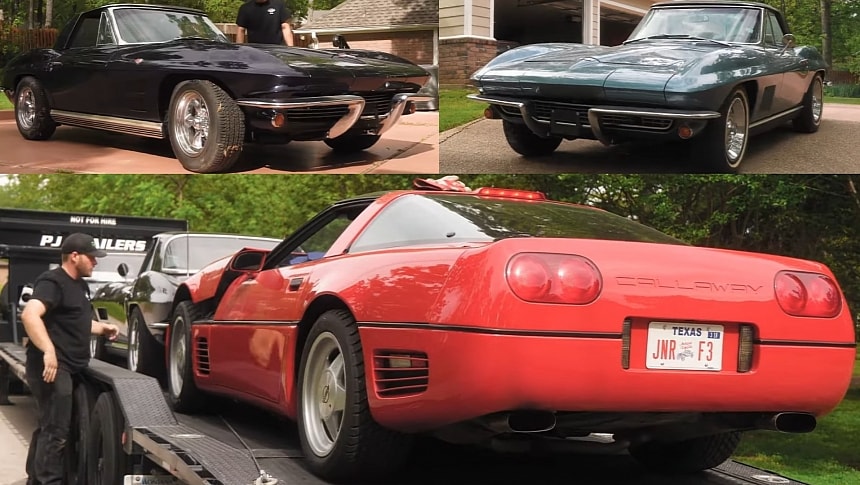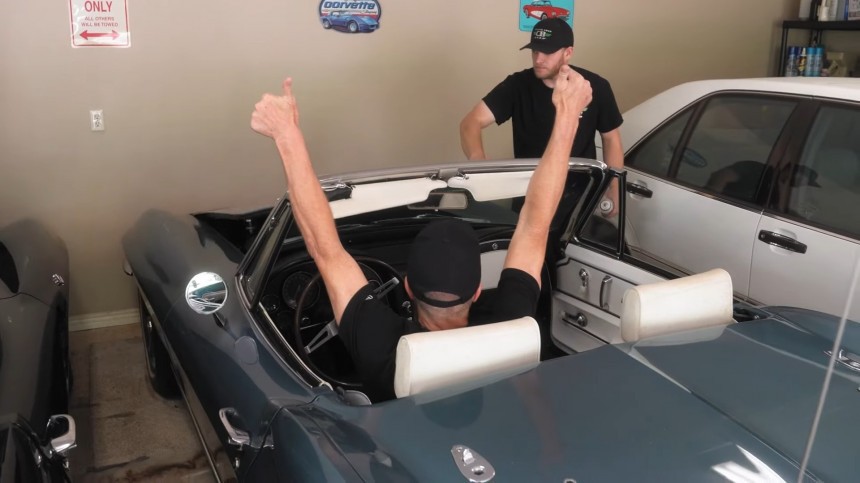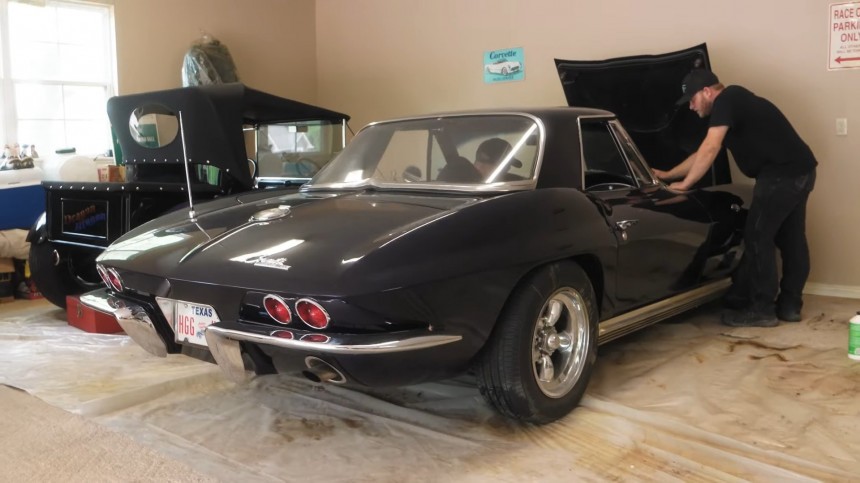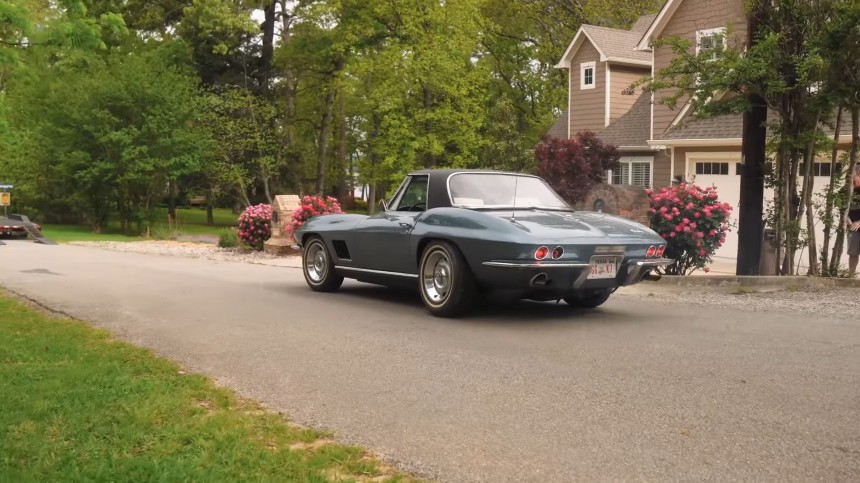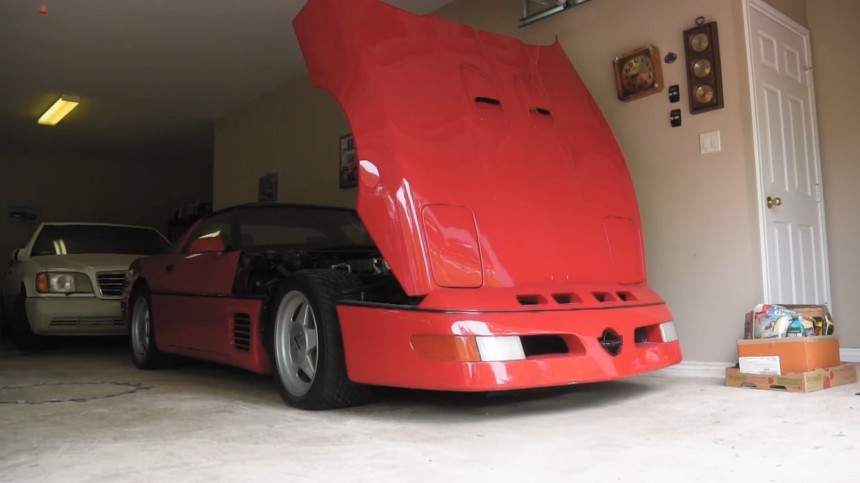The Corvette’s second generation was a short-lived production run that debuted in 1963 and ended in 1967, just five model years later. It saw several important changes in the spirit of America’s sportscar. The biggest changes were probably introducing a coupe alternative to the ragtop-only style of the first generation and an array of engines that would put any muscle car in its corner. From chic two-seat cruiser to big-block apocalypse, the C2 Corvette had something for every taste, pocket, and purpose.
The first year of the coupe body style in a Corvette was 1963. Still, its split rear window (now an icon of the model) left much to be desired regarding visibility. Chevrolet acted quickly and ditched the two-piece glass window for the rest of the Corvette’s existence. However, buyers weren’t particularly impressed with the 1964 model’s new coupe looks, and most of the orders applied were filled in with the convertible option.
The trend continued for the rest of the C2’s production—the soft-top was the preferred variant by a large margin (at least 62%) in the following years. 1963 saw the smallest gap between coupe and convertible orders (49.24% v 50.76%). From a statistical perspective, chances of finding a second-generation Chevrolet Corvette are high, especially in favor of the drop-top body style.
However, the chances of coming across two examples (and very fine ones) from the C2 family under the same roof are considerably lower. Factor in some rare options, and we’re in for a garage find worthy of (at least) a celebratory video like Dennis Collins just made. The famous car finder and YouTubing classics rescuer has added two C2 Corvettes to his impressive list of purchases. Add in a 1989 special edition ‘Vette, and this is one helluva buy.
Two second-generation classics, a 1964 and a 1967 convertible, sat under the same roof next to a 1989 Callaway twin-turbo example, all three in impeccable condition. They are not survivors but well-maintained and restored drivers, judging by the mileage on both odometers of the C2s. The convertibles—each with additional hardtops—show 72,872 miles / 117,251 kilometers (the 1964 example) and 68,258 miles / 109,827 kilometers (the '67).
They’re both in great shape, resulting from many years of dedication and passion, complemented by extensive restorations and rebuilds. The 1964 also features a few options that are not common on base models like this one.
Apart from the power brakes and steering, the Daytona Blue convertible also sports a third ‘power’ option, the Powerglide automatic gearbox with two ranges. Although it may seem that a sporty automobile wasn’t the best application for a two-speed box, the lowly tranny still found use in 1964.
That year, the Corvette only came with the 327 cubic-inch engine, the fabled Chevy 5.4-liter small-block V8 that offered four performance levels. The base 250-hp version was followed by a 300-hp version. At the same time, the performance options offered 365 horsepower or 375, the latter in the fuel-injected variant.
The Powerglide was available only for the low-powered Corvettes; the 250- and 300-hp motors and 2,480 came in this combination. The 250-hp V8 two-speed ‘Vette was ordered by 904 customers, making this find considerably rare.
There is, however, a catch – the engine looks just like the standard version from 1964, but it was rebuilt at some point and, as such, now makes 350 hp. Quite the task for the modest two-speed automatic and the mandated 3.36:1 rear axle (the Powerglide only came with this gearing, with or without a Positive Traction differential).
The ’67, sitting right next to the ’64 in this garage in Bullard, Texas, also boasts some rare factory options, like the headrests (1,472 units were ordered with them) and the vinyl-covered hardtop. Thirty-five cars, out of 1,966 convertibles equipped with a hardtop, came with the additional roof wrapper. Interestingly, the regular hardtop was $52.70 extra, while the vinyl covering alone cost $97.85.
By comparison, the price for a 1964 hardtop was $236.75; what’s interesting is that more than 7,000 customers opted to pay the hefty sum in 1964. Only 1,966 bought one in 1967 (not including the 35 vinyl-covered hardtops) when the price had dropped to less than a quarter of what it was in ’64.
Classics that run are a sight for sore eyes, even though the two oldtimers aren’t drivable, with their brakes not doing much work. However, the third option is the Callaway, which will run and drive on the spot. This special Callaway Corvette was also restored, but it was as fine a job as any, just like the two C2s received.
The Old Lyme, Ohio tuner did not cut corners when it designed the twin-turbocharged Corvette (RPO B2K), which produced 382 horsepower and 562 pound-feet of torque (387 PS, 762 Nm). That was 1989 when a standard Chevrolet-built-and-sold Corvette of the fourth generation offered 245 hp and 340 lb-ft (248 PS, 461 Nm).
However, a Callaway edition also did not cut any expenses, costing an additional $26,995 over the standard price of a coupe ($31,545). A special aerodynamic body would set back the buyer another $6,500. Only 69 examples were built in 1989, and this is serial number 030.
According to the tuner, the Callaway twin-turbo Corvette was the fastest production car in America at the time, with a top speed of 191 miles per hour (307 kph). Interestingly, Chevrolet fully backed the Callaway conversion with a manufacturer's warranty, which meant the cars were available to order at any dealer in the U.S.
The trend continued for the rest of the C2’s production—the soft-top was the preferred variant by a large margin (at least 62%) in the following years. 1963 saw the smallest gap between coupe and convertible orders (49.24% v 50.76%). From a statistical perspective, chances of finding a second-generation Chevrolet Corvette are high, especially in favor of the drop-top body style.
However, the chances of coming across two examples (and very fine ones) from the C2 family under the same roof are considerably lower. Factor in some rare options, and we’re in for a garage find worthy of (at least) a celebratory video like Dennis Collins just made. The famous car finder and YouTubing classics rescuer has added two C2 Corvettes to his impressive list of purchases. Add in a 1989 special edition ‘Vette, and this is one helluva buy.
They’re both in great shape, resulting from many years of dedication and passion, complemented by extensive restorations and rebuilds. The 1964 also features a few options that are not common on base models like this one.
Apart from the power brakes and steering, the Daytona Blue convertible also sports a third ‘power’ option, the Powerglide automatic gearbox with two ranges. Although it may seem that a sporty automobile wasn’t the best application for a two-speed box, the lowly tranny still found use in 1964.
The Powerglide was available only for the low-powered Corvettes; the 250- and 300-hp motors and 2,480 came in this combination. The 250-hp V8 two-speed ‘Vette was ordered by 904 customers, making this find considerably rare.
There is, however, a catch – the engine looks just like the standard version from 1964, but it was rebuilt at some point and, as such, now makes 350 hp. Quite the task for the modest two-speed automatic and the mandated 3.36:1 rear axle (the Powerglide only came with this gearing, with or without a Positive Traction differential).
The ’67, sitting right next to the ’64 in this garage in Bullard, Texas, also boasts some rare factory options, like the headrests (1,472 units were ordered with them) and the vinyl-covered hardtop. Thirty-five cars, out of 1,966 convertibles equipped with a hardtop, came with the additional roof wrapper. Interestingly, the regular hardtop was $52.70 extra, while the vinyl covering alone cost $97.85.
Classics that run are a sight for sore eyes, even though the two oldtimers aren’t drivable, with their brakes not doing much work. However, the third option is the Callaway, which will run and drive on the spot. This special Callaway Corvette was also restored, but it was as fine a job as any, just like the two C2s received.
The Old Lyme, Ohio tuner did not cut corners when it designed the twin-turbocharged Corvette (RPO B2K), which produced 382 horsepower and 562 pound-feet of torque (387 PS, 762 Nm). That was 1989 when a standard Chevrolet-built-and-sold Corvette of the fourth generation offered 245 hp and 340 lb-ft (248 PS, 461 Nm).
According to the tuner, the Callaway twin-turbo Corvette was the fastest production car in America at the time, with a top speed of 191 miles per hour (307 kph). Interestingly, Chevrolet fully backed the Callaway conversion with a manufacturer's warranty, which meant the cars were available to order at any dealer in the U.S.
